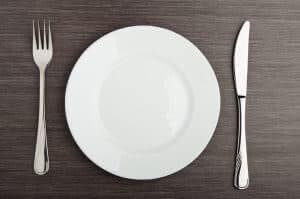Omad Diet Guide
Table of Contents
How to start OMAD
Step-By-Step Beginners Guide to the Omad Diet
FREE Omad Diet Checklist
50 Tasty Omad Diet Recipes
What can you drink on the Omad Diet?
Frequently Asked Questions
Which Supplements are needed?
Do’s and Dont’s of OMAD
How to Choose your OMAD Eating Window
Top 10 Myths of Eating One Meal a Day
Top 10 Tips when Starting OMAD
Top 25 Ways to Reduce Hunger & Overeating on Omad
Top 20 Benefits of the OMAD Diet
Potential Side Effects Of The Omad Diet
Omad Exercise & Weight Training Tips
10 Helpful Tools to Use on Your Omad Diet Journey
11 Celebrities Who Eat One Meal A Day
OMAD Success Stories
OMAD – A history of how eating evolved
How to Eat One Meal a Day with Keto
Community Forums
 We were always taught that eating three meals a day is what keeps us healthy and is what are body needs.
We were always taught that eating three meals a day is what keeps us healthy and is what are body needs.
If we were to skip meals and eat snacks instead, we were told how bad is was to be doing this. “Eating three meals a day” was somehow embedded in our minds about just being the right way to structure our feeding habits.
But what have we been missing? Where did this concept originate from?
The fact is, many people around the world have not always eaten three meals per day.
The concept of eating three meals a day is a newer concept than most people realize. For most of the origination of time, meals were variable.
A European peasant in medieval times would start his morning with an ale or bread.
In the afternoon, he would then bring his food into the field to consume his large meal for the day.
This meal could also take place in the evening. Depending on his work, it was usually between 2 and 6.
Dinner back in these times were not as distinct as the what has become in the last two centuries.
When the 20th century came, workers learned to only eat at specific times.
When the factory whistle was blown, people knew it was time to go home and eat.
With that, Americans are eating at later times because of longer work schedules and less flexibility. At work, they are eating at scheduled break times which is usually at least three times per day.
Like anything that becomes a norm, it became driven by marketing, impulses, and personal taste.
The food industry has driven the concept of three meals per day because they want to sell more food.
In return, this urges us to eat more often. It becomes a very easy sell to marketers because they know how much people love to snack.
The long-term effect of all of this is that any time of the day has become a time to eat for many people. It has become a blurred vision between snacks and meals.
The snack industry started it’s run in the mid 20th century and really hasn’t stopped. This industry alone had an estimated worth of over 330 billion at the end of 2015.
As you can see, the omad diet is a very logical choice when you consider the history.

